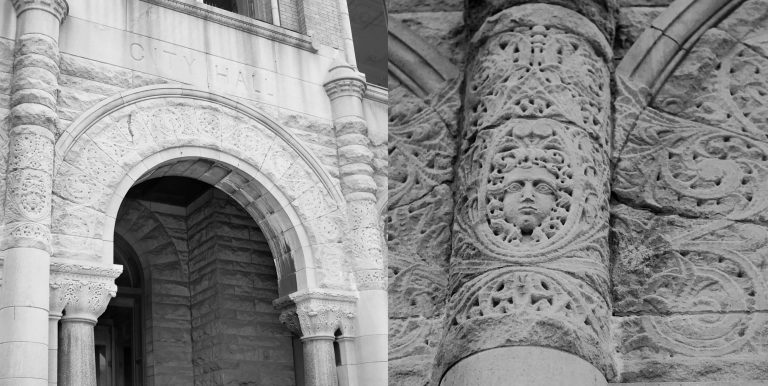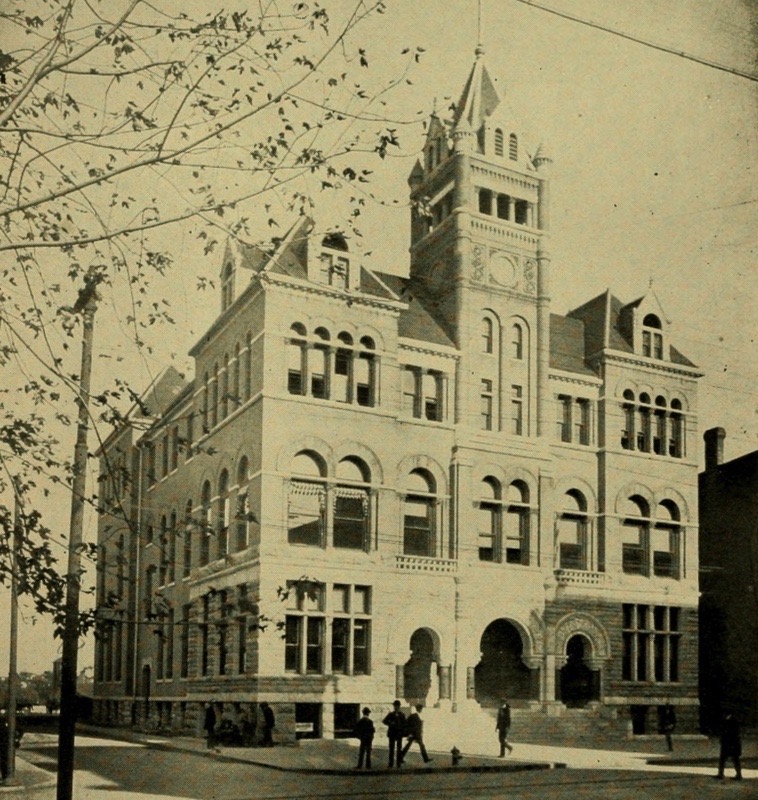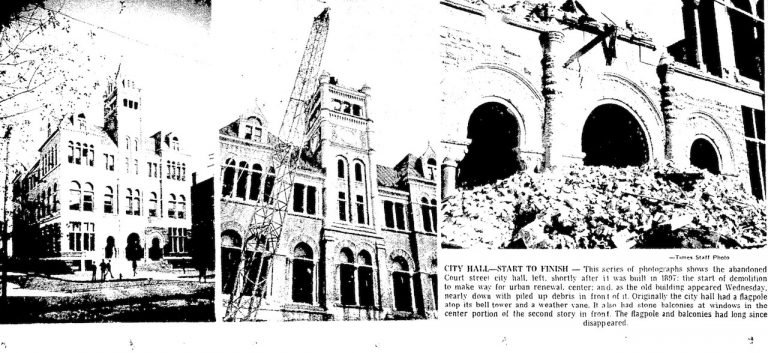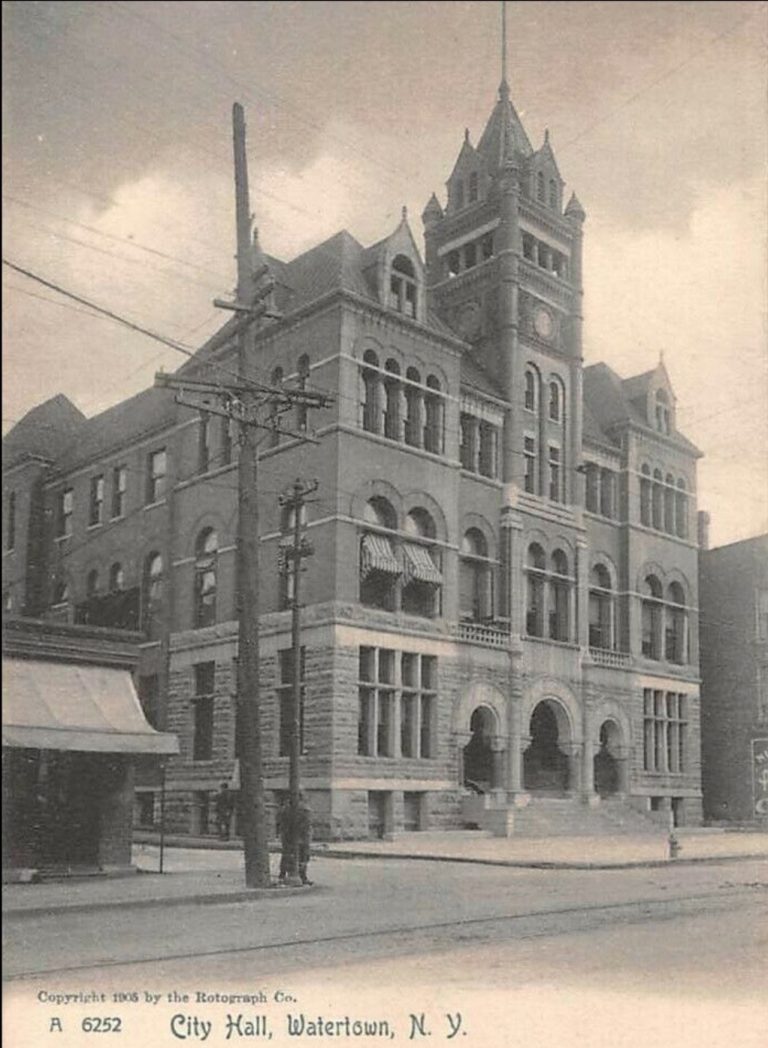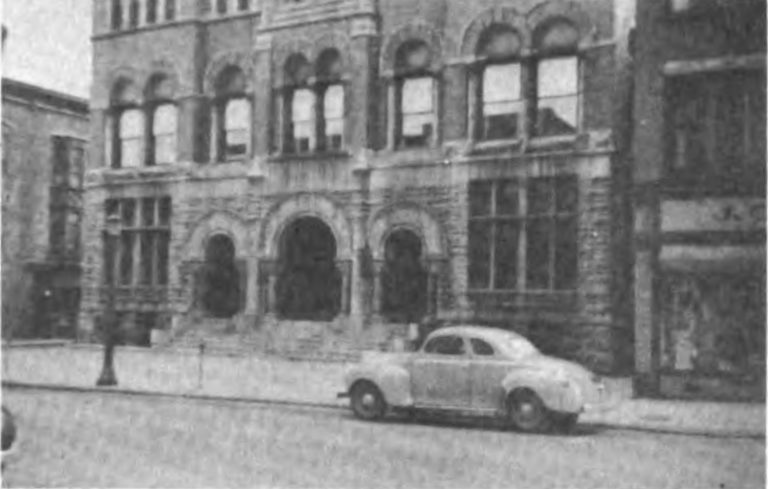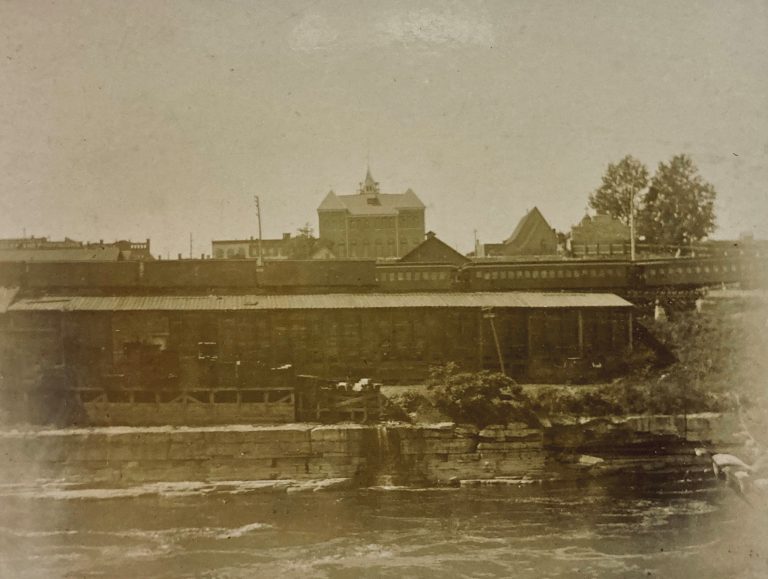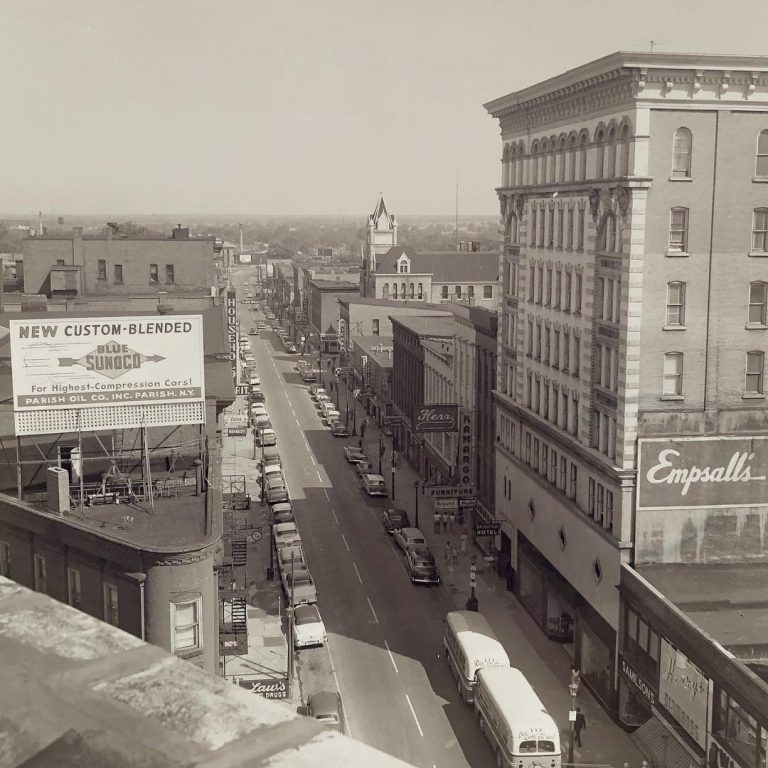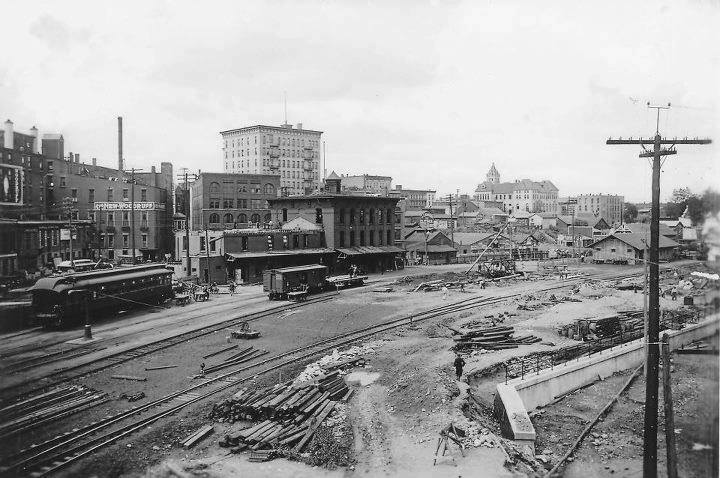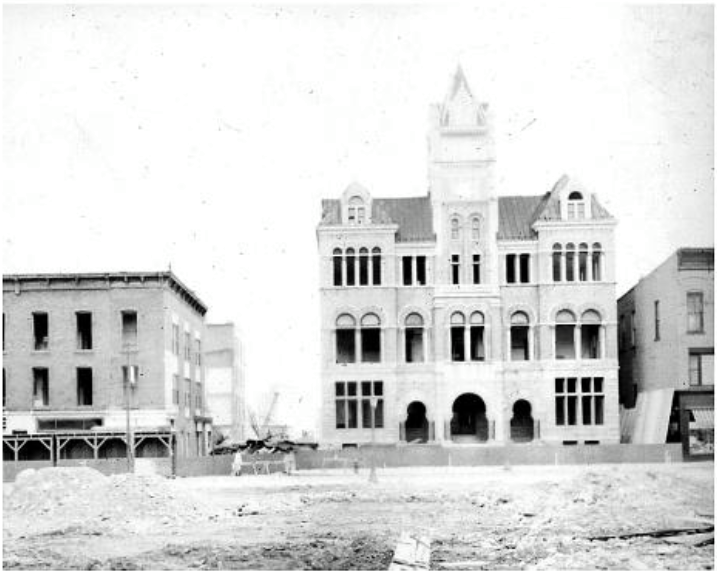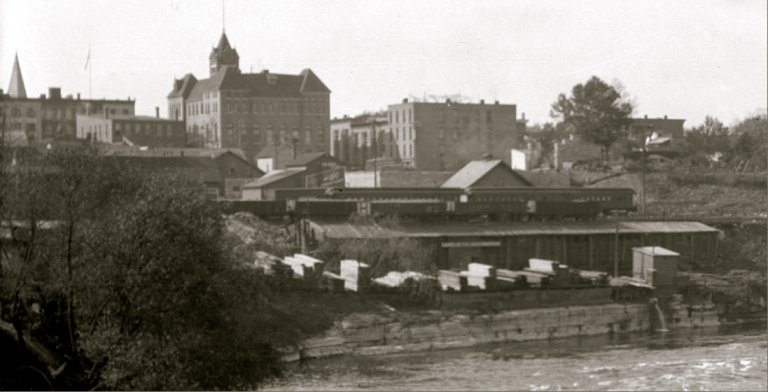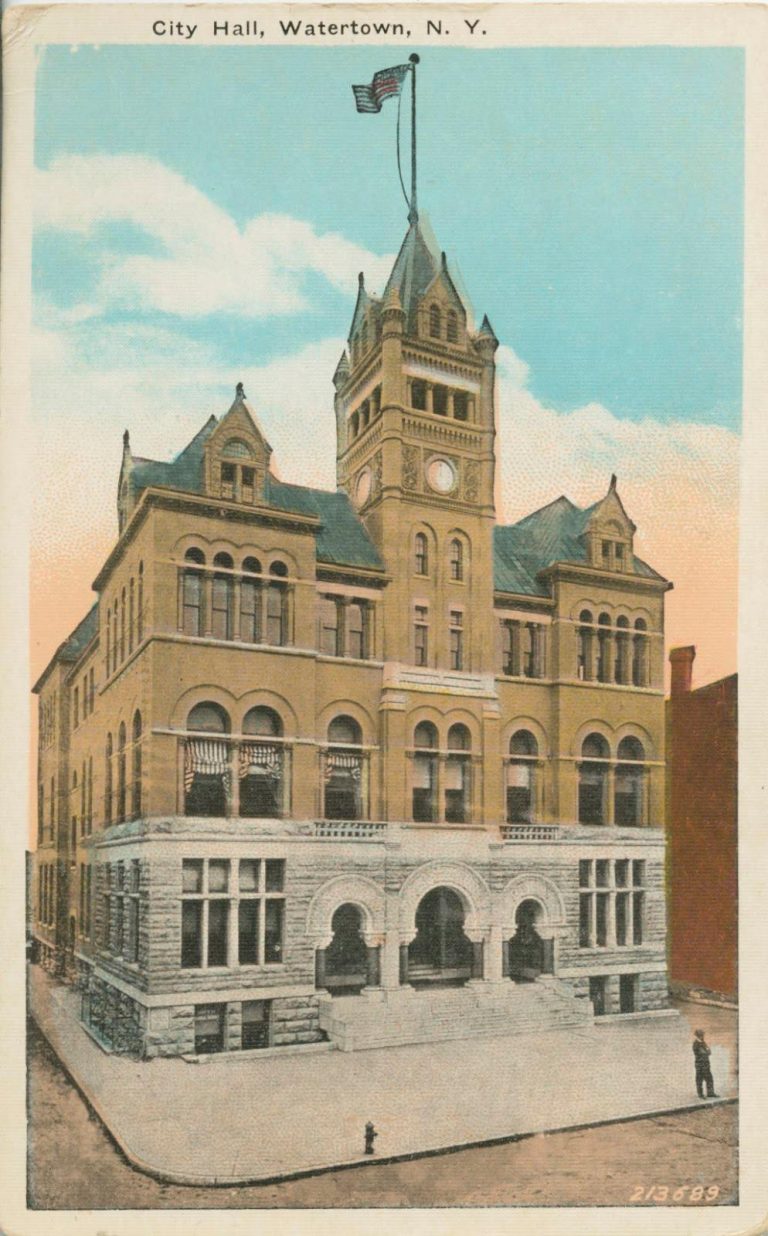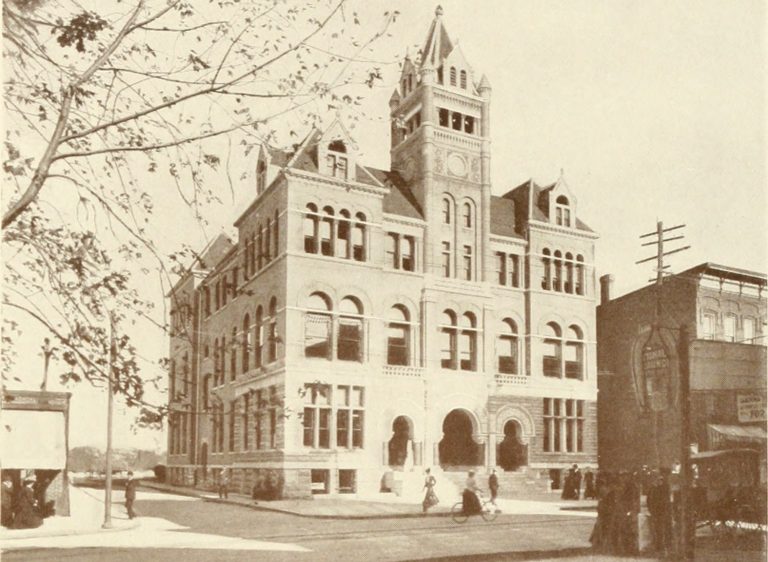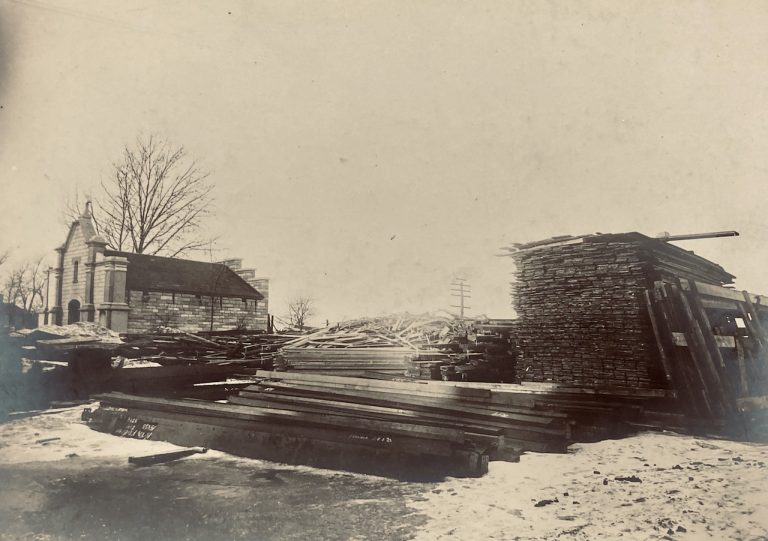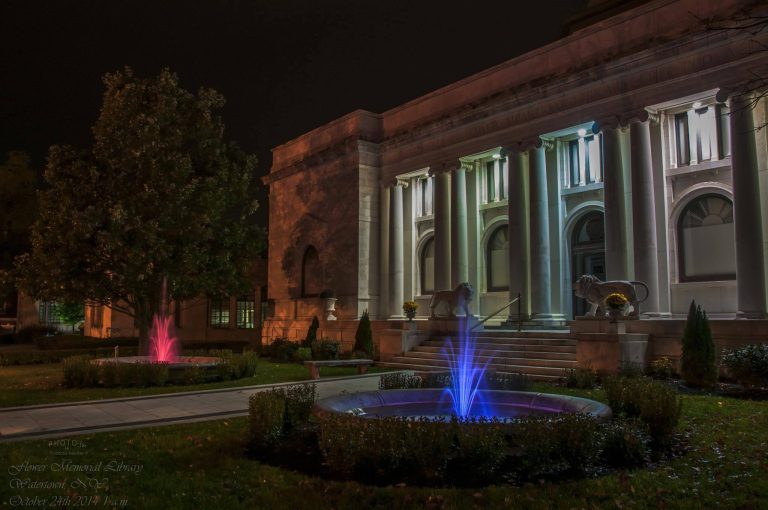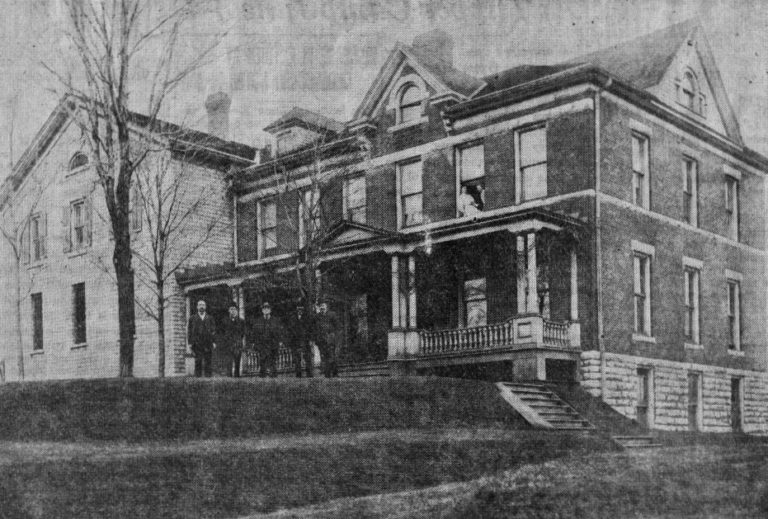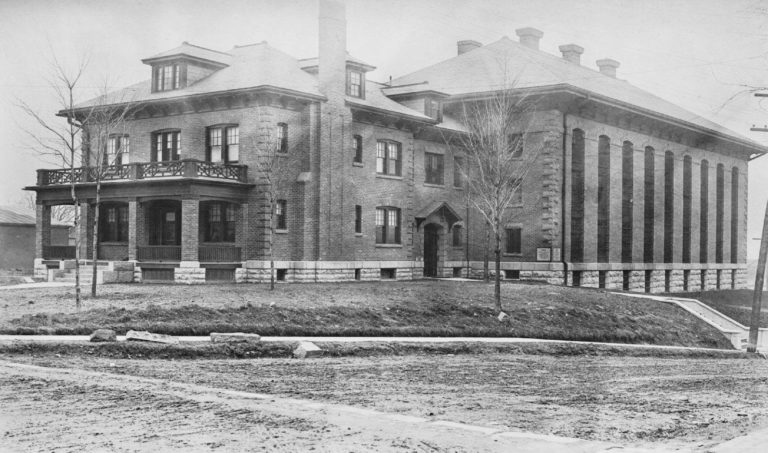Old Court Street City Hall – Erected In Controversy, Demolished In Controversy
The city forefathers who built the Court Street city hall didn’t have crystal balls. Nor did their forefathers who deeded the land to the then village of Watertown for use as a burial ground, for that matter. One can only imagine the dismay of their respective generations if they were to have seen what would become of their efforts: a burial ground essentially desecrated and remains interred into (mostly) Brookside Cemetery to build a towering, Romanesque city hall that would be torn down less than 70 years later and replaced with, well, 1960s architecture with all the style and grace of a cardboard shoe box on stilts . . . on Washington Street, no less, where other historical structures were torn down to make room.
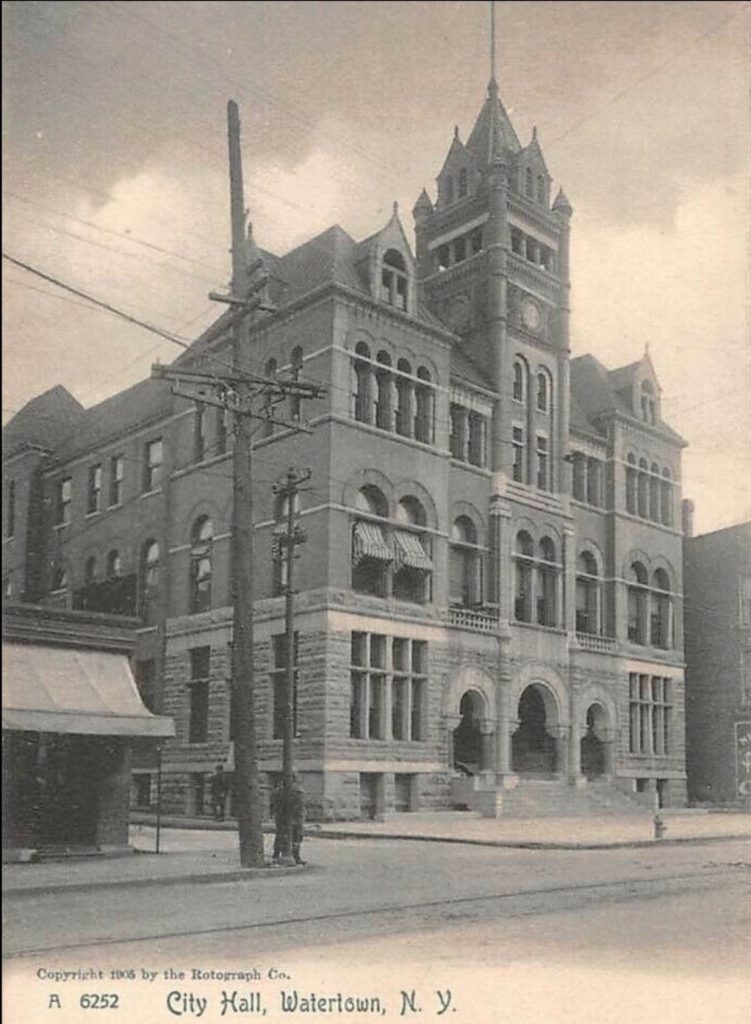
In April of 1895, the city would send a proposed act enabling the construction of a new city hall to the state for review. The bill, printed in the Watertown Daily Times, read in part—
The common council of the city of Watertown is authorized to submit to the taxpayers of said city, qualified to vote as provided by section eight of the title five of the city chargers of said city, a proposition to build and equip a city hall to cost not more than $40,000 upon the property owned by said city on Court Street, and known as the “City Lot,” and also at the same time there with such other propositions as to the plan and expense of said building, as it by resolution may be determined.
As recounted in the Trinity Church – Burial Ground article, the land in question was used as a burial ground dating since at least 1800. The land, owned by one of the earliest Watertown settlers, Henry Coffeen, was conveyed to the trustees of the village of Watertown and their successors with the following stipulation noted in the deed: “So long as the same shall be occupied as a burying ground, the same now being used a public burying ground.”
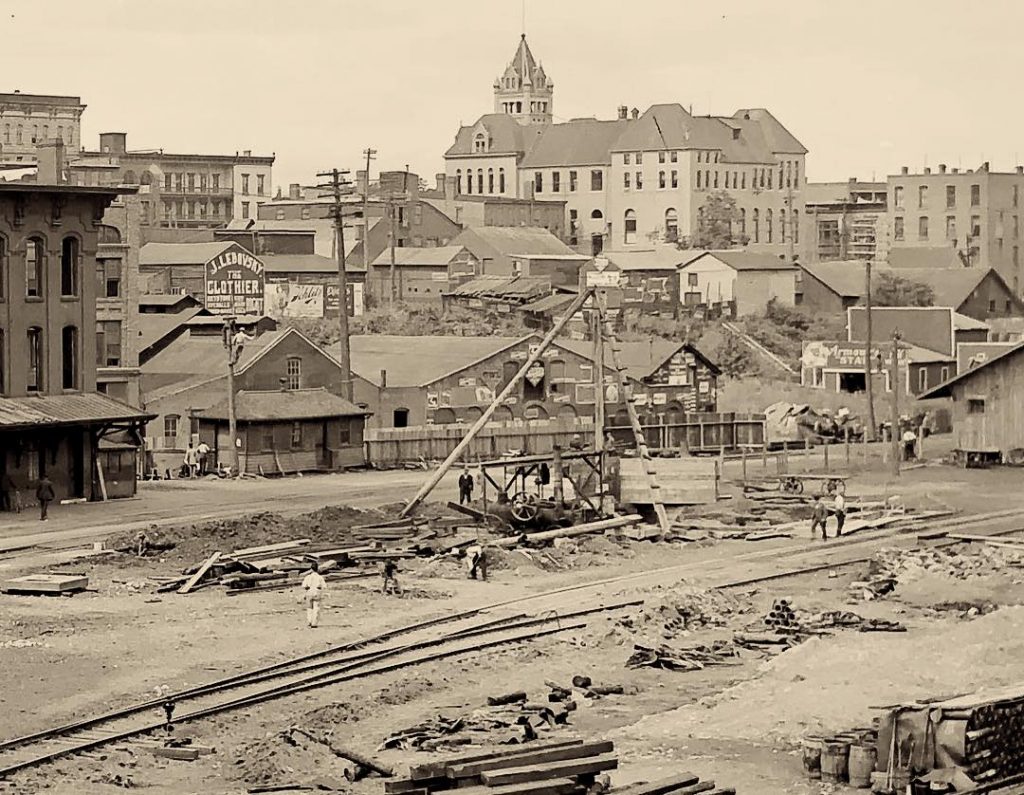
What preceded the proposed bill was the desecration of the graveyard that a Watertown Daily Times reporter found “nearly obliterated, only six of the ancient tombstones remaining” and being used for both a dumping ground for city refuse and with a “public highway” running through it.
Though the construction of the new city hall would move forward, the controversy would not go away. The city was able to at least come to agreeable terms with Mrs. Duford, a descendent of Henry Coffeen who claimed the terms of the deed had been violated. More information on the events surrounding the controversy can be read here.
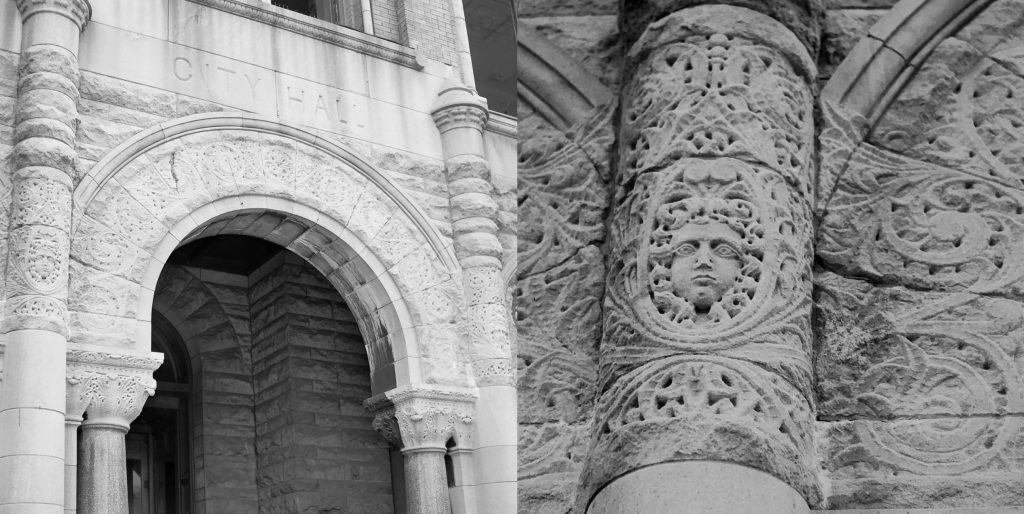
There was little doubt amongst the press that a new city hall was needed, particularly on account that the current premises were rented. Size and lack of proper ventilation were also major concerns of the then-existing property, but so too were the potential costs for a new one.
Mayor J. B. Wise believed the work could be completed not only without the need for raising any taxes but by turning the property into a profit-maker, too. The city would look at bonds to cover the $20,000 cost of the lot and $40,000 for the building, then rent three stores at $700 each, rent for present city rooms for $1,475, as well as several other proposals that could net the city $5,435.
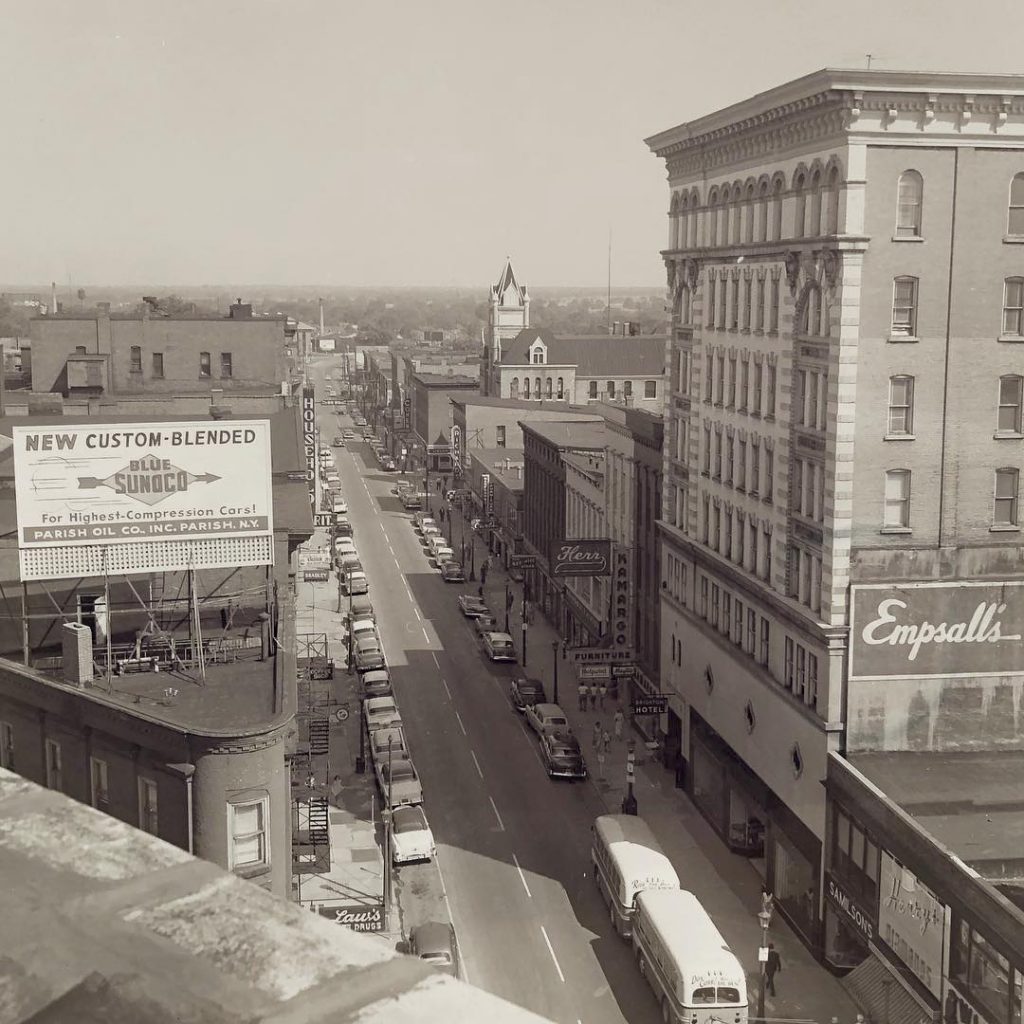
Despite the controversy and repeated calls to build it somewhere else, that the land was too unsightly and narrow, on June 3, 1895, the city taxpayers voted to erect a new city hall 631 for vs. 213 against. A number of plans would be reviewed, but there was a unanimous choice for local architect D. D. Kieff. According to the Times article dated August 3, 1895—
The building will be a beautiful structure and an ornament to the city. Watertown is to be congratulated on the skill of Architect David D. Kieff, whose plans have met with well-earned praise. The building will be Romanesque in style of architecture, and in appearance and color it will fully merit the enconiums of the people. Stone, marble and buff-colored brick will combine to heighten the effect of the architectural style.
The building will be 68 feet wide, 99 feet long, with three stories and a high basement. The main entrance will be spanned by three arches with carved polished columns. This entrance is reached by a flight of marble steps to a lobby 7.5 x 30 feet. Thence four steps to the main entrance hall. The first story on front is to be built of marble, second and third stories of brick and terra cotta to match.
The main tower, located in the center, is 15 feet square and reaches to a height of 90 feet (it was originally to be 105). It is an open belfry in the top and in the center is also provided for a city or town clock, but at present a terra cotta panel will fill the space provided. The roof is mansard, being covered with slate, hip and ridge roll cresting, with projecting dormers on either side and maintaining the style of architecture. The building is to set back from the street about 16 feet, with grass plots on either side of the entrance.
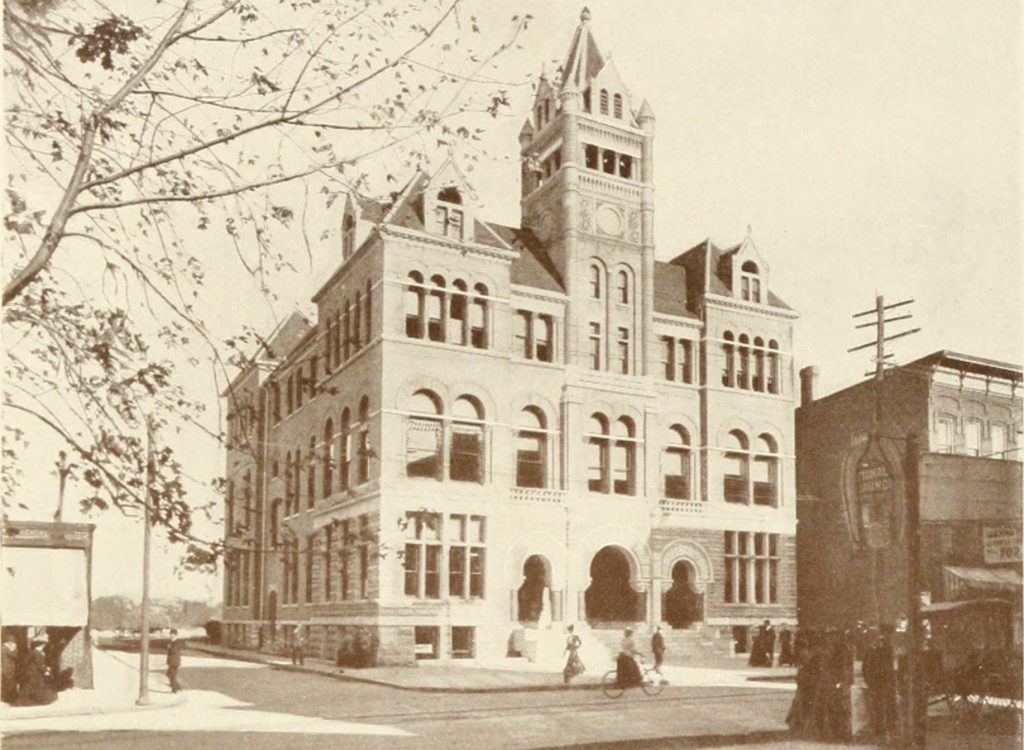
Holding true to his word, Mayor Wise would reject all the initial bids for the city hall contract for being too high with the lowest bid, $46,250 from local contractor John Hardiman, $6,250 more than the amount the appropriation allowed for. By putting it out for bid again, one would believe revisions to be under the $40,000 threshold – the question was, by how much?
Hardiman would revise his bid (it was not clear if others submitted or not) and was awarded the contract on the price tag of $39,924 which called for the project to be completed by the last day of August, 1896 – a time frame consisting of 1 year and 12 days. Two and a half months later, the cornerstone would be laid on November 2.
As you might guess, it’s never a good sign when the press prints that a general idea of what the new city hall will look like when completed is forming… with less than two months to go. Even worse is when essentially the same news is printed on September 28. By Thanksgiving, the cost was reported to have ballooned to $53,000, which included furnishing it – but work still remained to be done.
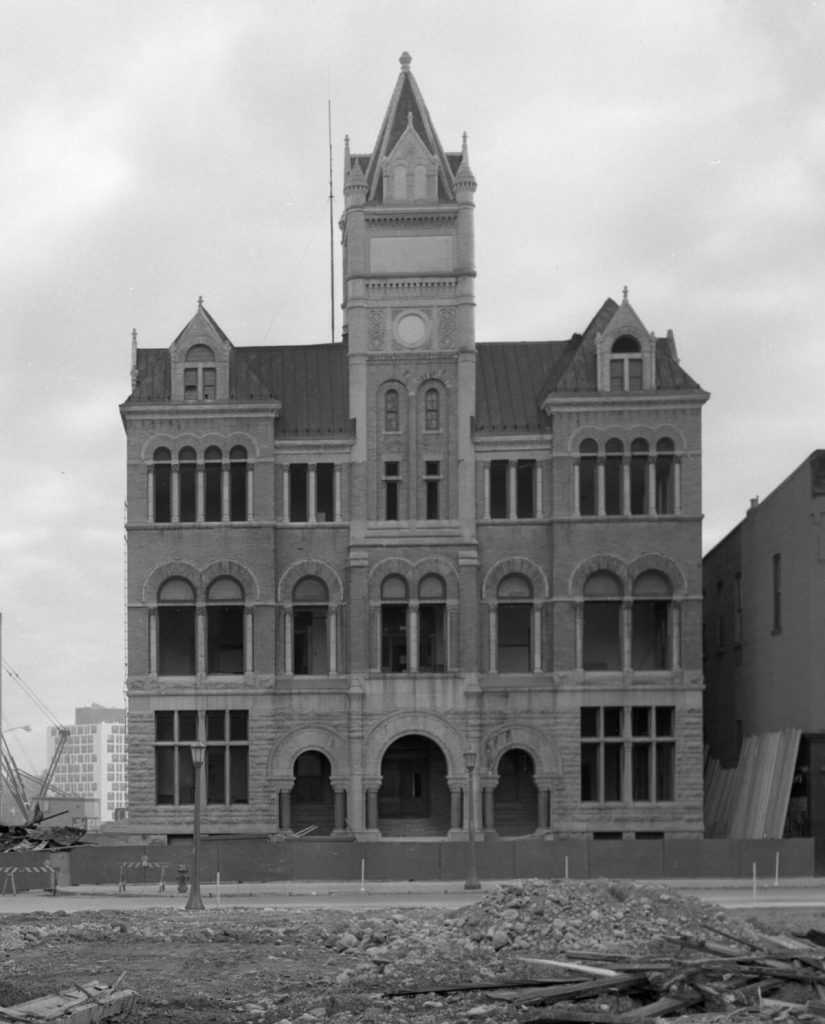
On December 21, the Times would report—
The 4,500 pound fire alarm bell has been removed from the courthouse belfry and is now ready to be placed in position in the city hall. The bell bears the date 1875, and the additional inscription “Gen. Bradley Winslow, mayor; G. Brandford, S. H. Tripp, committee of council.”
The new city hall would hold its first common council meeting on May 4, having been opened for the public to view the day prior. A mere 52 years later, the first rumblings of urban renewal in 1959 would spell the beginning of the end for the city hall; what was born from controversy would die in controversy as well.
The old city hall, vacated after the new city hall on the corner of Washington and Sterling Streets was completed in 1965, would be demolished in October of 1966. The old stone city vault behind it, used for storing the deceased during the winter, would be razed and some of it reassembled in Cape Vincent as part of a new vault in the St. Vincent de Paul Cemetery overlooking the river near the Riverside Cemetery. It was the last piece associated with the burial ground which posed the question of the city’s hold on the property.
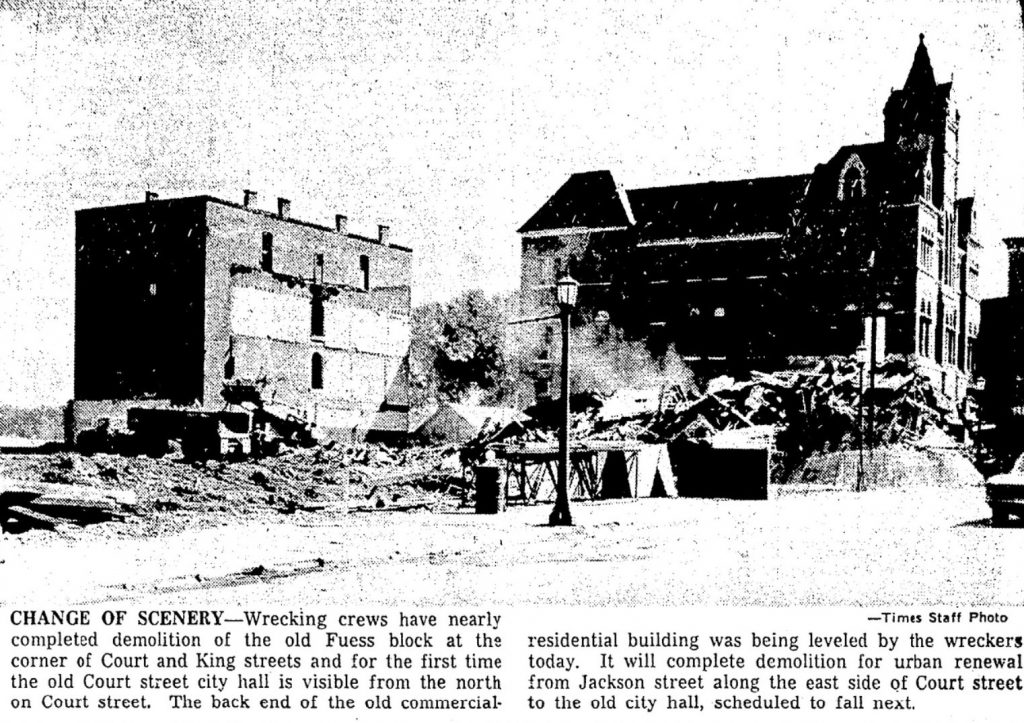
Mrs. Dorothy Ward Keib formally notified City Manager Ronald G. Forbes, amongst others, of her “interest” in the property. Mrs. Dorothy Keib, daughter of the late J. Francis Ward, said her father took title of the property from his brother, attorney James A. Ward, in 1905 and recorded in the office of the Jefferson County Clerk on June 30th of that year. She would go on to note in the Times article—
“I understand that the land described in the deed referred to is the same land granted by Henry Coffeen to the village of Watertown for a public burying ground in 1819,” said Mrs. Keib.”
“With the contemplated demolition of the burial vault, it is my contention that the last vestige of a ‘burying ground’ would pass away and the use of the land by the city of Watertown and whatever claim it might have, if any, would cease when such demolition becomes fact.”
The property was valued by the city at $10,000 at the time. No resolution to the claim was found other than the dispute dating back to the 1920s was thrown out for lack of additional evidence.
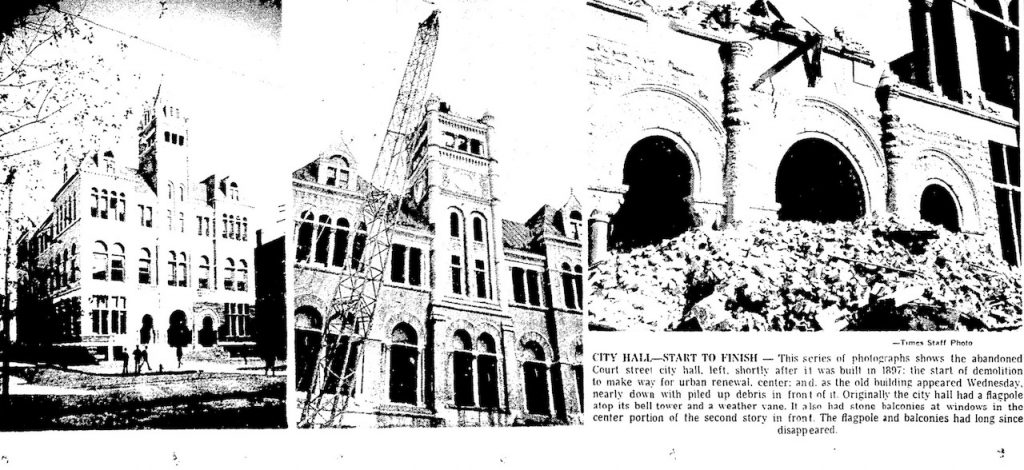
The Old City Hall Bell
The Court Street city hall apparently never had a clock installed on its tower, perhaps due to the then-new First Baptist Church having one installed. As mentioned earlier, the Court Street city hall did receive the 4,500 lbs. bell from the County Court House. During the city hall demolition in 1966, the bell would be moved to the rear of the Jefferson County Historical Society and eventually placed at the current city hall.
Though there is no ticking clock counting down the days for the current city hall, there is a bell and a matter of time to take its toll for the winds of change will inevitably once again blow.
